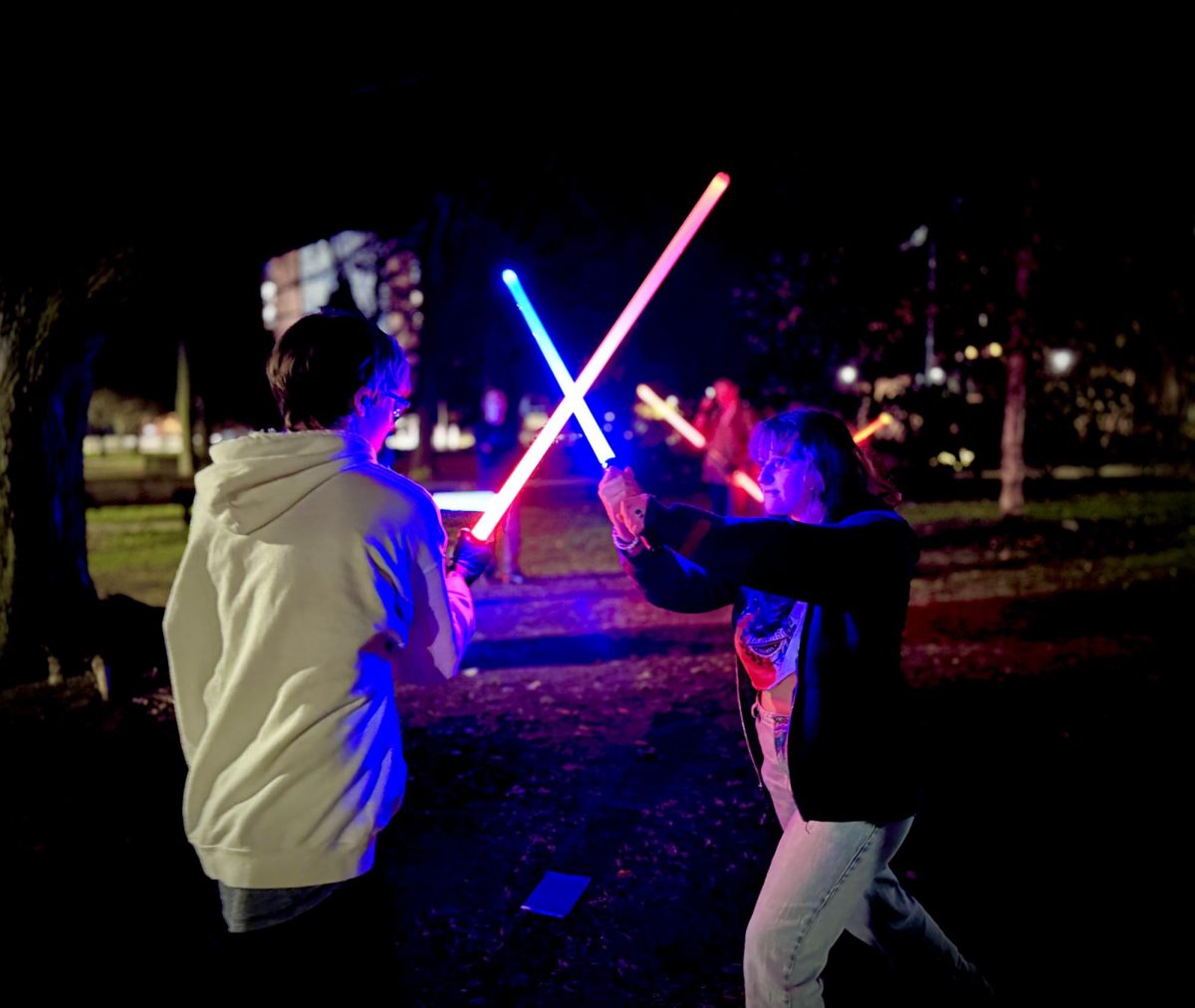Lou Krueger stumbled into his career in photography as a young artist and has been making art for more than 40 years.
Krueger, photography professor, recalled the beginning of his education in the arts as a student at Northern Illinois University studying metals. In metals, artists manipulate metal materials and Krueger worked exclusively with gold and silver during the 1970’s when the metals were cheap. His instructors were essentially jewelers.
Krueger was invited back to NIU to participate in their graduate program in metals but an interest in experimental art techniques and a jar full of teeth swayed him to switch to the photography program instead.
After visiting his dentist for a grueling 7-hour operation to remedy some oral problems he was having, Krueger struck up a great friendship with his dentist. During a visit, his friend offered him a jar full of teeth and he just couldn’t pass them up.
“I took those teeth and I put them in these wax forms, or pots…and they were sort of these ghastly looking things.” Krueger said. “My metals instructors…they were not prepared for this work.”
Krueger presented his toothy art to the photography department and they ate it up. It was then that he decided to switch programs.
In the 38 years since Krueger left NIU, his work has only continued to become more abstract and emotive.
Today, Krueger works out of his office in the Fine Arts Center on campus. His office is lined with photographs and objects on shelves and offers a view of the Wolfe Center. Kruger works with a Canon Mark II and a MacBook to produce thought provoking photographs.
In his current work, Kruger likes to push the limits of what the observer perceives.
“The process you work with has to fit your personality. And how you are with your artwork is how you are as an instructor.” Krueger said. “If you’re this thoughtful, quiet and introspective photographer that’s almost exactly how you’re going to teach. But if you’re absurd in your approach to your artwork and experimental…that’s also how you teach.”
Krueger took over a digital hybrids class two years ago at the University and had no experience in digital art. He pointed out a few wooden boxes on a shelf and said his notable work up until that point consisted of constructing cameras and photographing art with them.
“The only reason I took [the class], and I wasn’t qualified to teach it, but the class was filled with some really great students and I didn’t want it to get canceled.” Krueger confessed.
Sarah Thomas, a 2013 alumni of the School of Fine Art, studied with Krueger during her undergraduate career in photography.
“His teaching style is his own where he pushes students to do what they are passionate for but presents the reality of work ethic and how you need it to succeed.” Thomas said. “I learned you can’t succeed if you don’t try and don’t have a love for what you do. There’s always a reason why you are creating and he helps his students figure that out.”
Krueger said that work ethic is one of the most important concepts he teaches to his students. He himself recently struggled during a piece that took more than a year to complete but kept pushing anyway.
“Sometimes you’re an inch away from your best or your worst work.” Krueger said.
Students like Thomas are given that kick in the pants that encourages them to press on and that hard work can yield productive results.
With the help of his students, Krueger came up with a project based on the transformation of the body. The project led to some models being scouted out for the class but when given the opportunity, students shied away from working with the models.
Feeling a bit responsible for soliciting the models to help and offering them some cash, Krueger asked the models to model for his work. Krueger had only used models once before and wasn’t practiced in studio photography.
Off the cuff, Krueger decided to do an “inventory of body parts” that were painted gold. Krueger planned to use his inventory in later work.
The project Krueger is working on now draws inspiration from Charlie Eisenmann’s photography from the late 1800’s that featured what many would call circus freaks.
After going through numerous surgeries throughout his life, Krueger’s body is now held together with various pins, screws and metal plates. That was when he began to question what the threshold between normality and abnormality is in society today. These interpretations are apparent in some of his recent work.
Krueger’s work may be off-putting for some who see it, but Krueger said he hopes that it also provokes the observer.
“Only recently did I realize that pain is a theme that runs throughout my work. There is an element of pain, either psychological or physical, in all of my work.” Krueger said.
Thomas was impressed by the power in Krueger’s photography.
“His work is very bold. It’s contemporary to a point where it pulls you in and pushes you away at the same time, which I think is an incredible accomplishment.” Thomas said.
Like many artists, Krueger loves getting feedback from his peers on his work. The ideal compliment for his work? Disturbing and fascinating.
“I tried to add a bit of humor but a lot of people don’t get it.” Krueger said.
Krueger’s current projects aren’t published online because he is in talks to present a solo exhibition at the Los Angeles Center for Digital Art next year.
Krueger will be giving his final talk at BGSU next Friday, April 2 at 6 p.m. in room 204 in the Fine Arts Center on campus.







